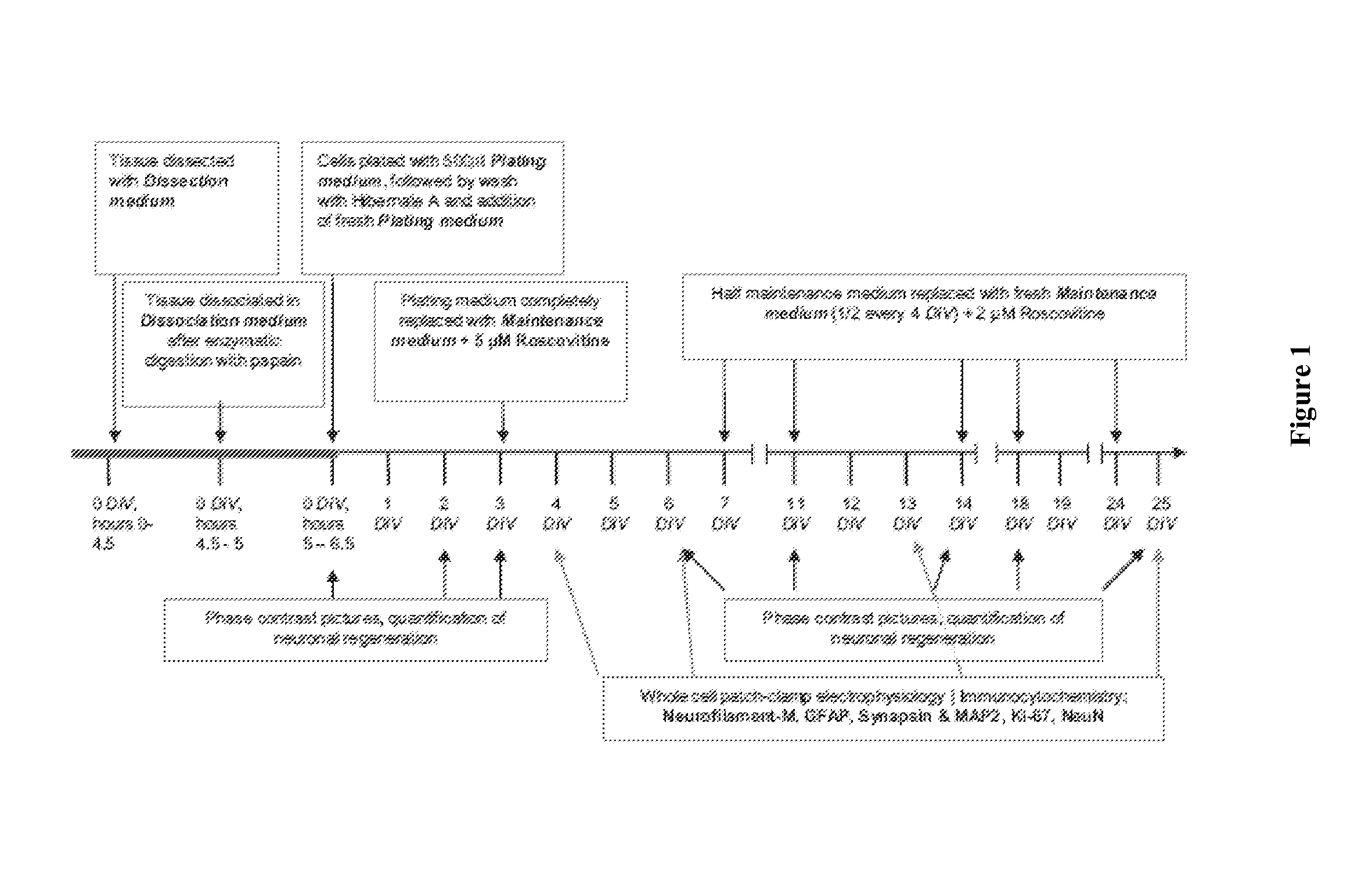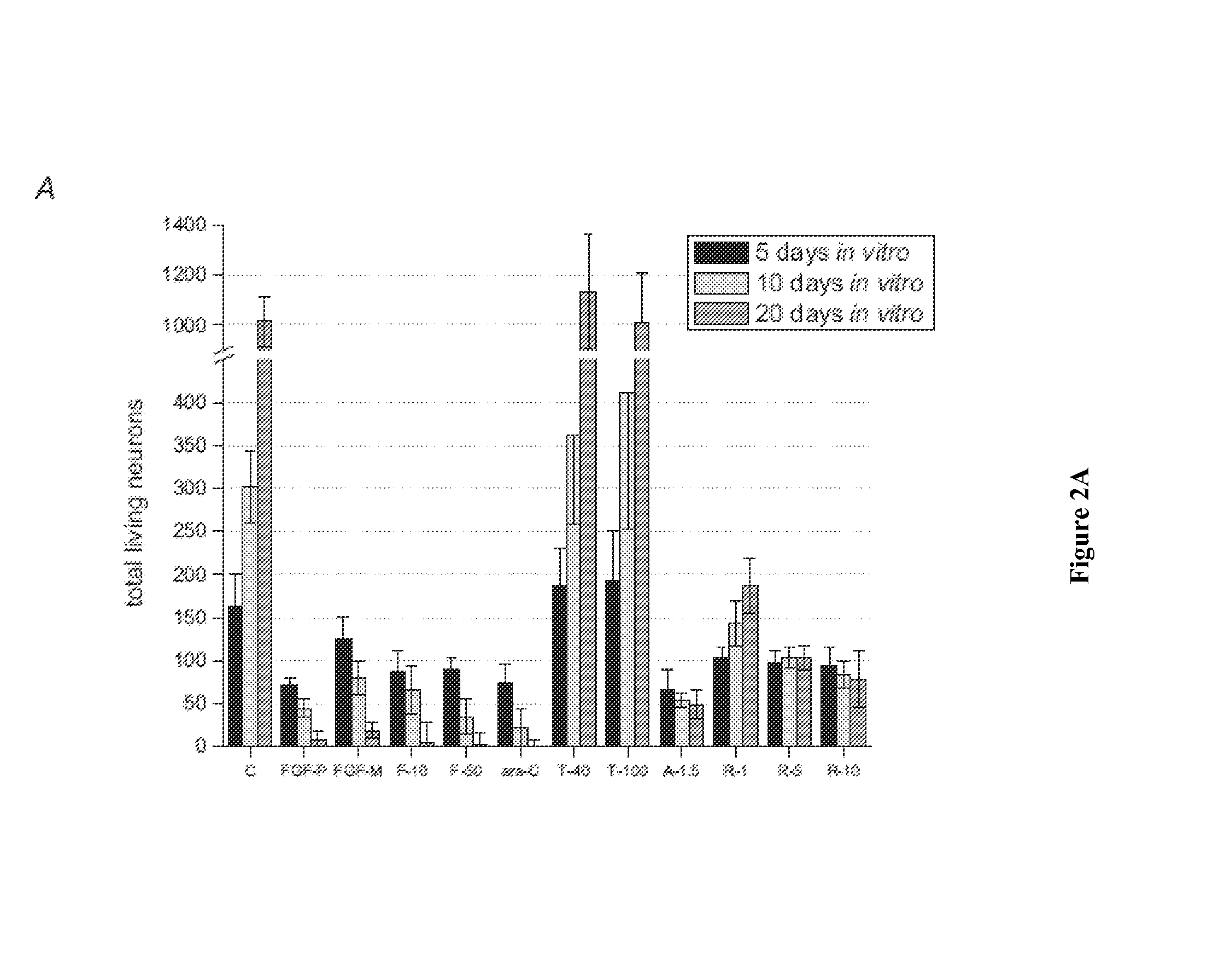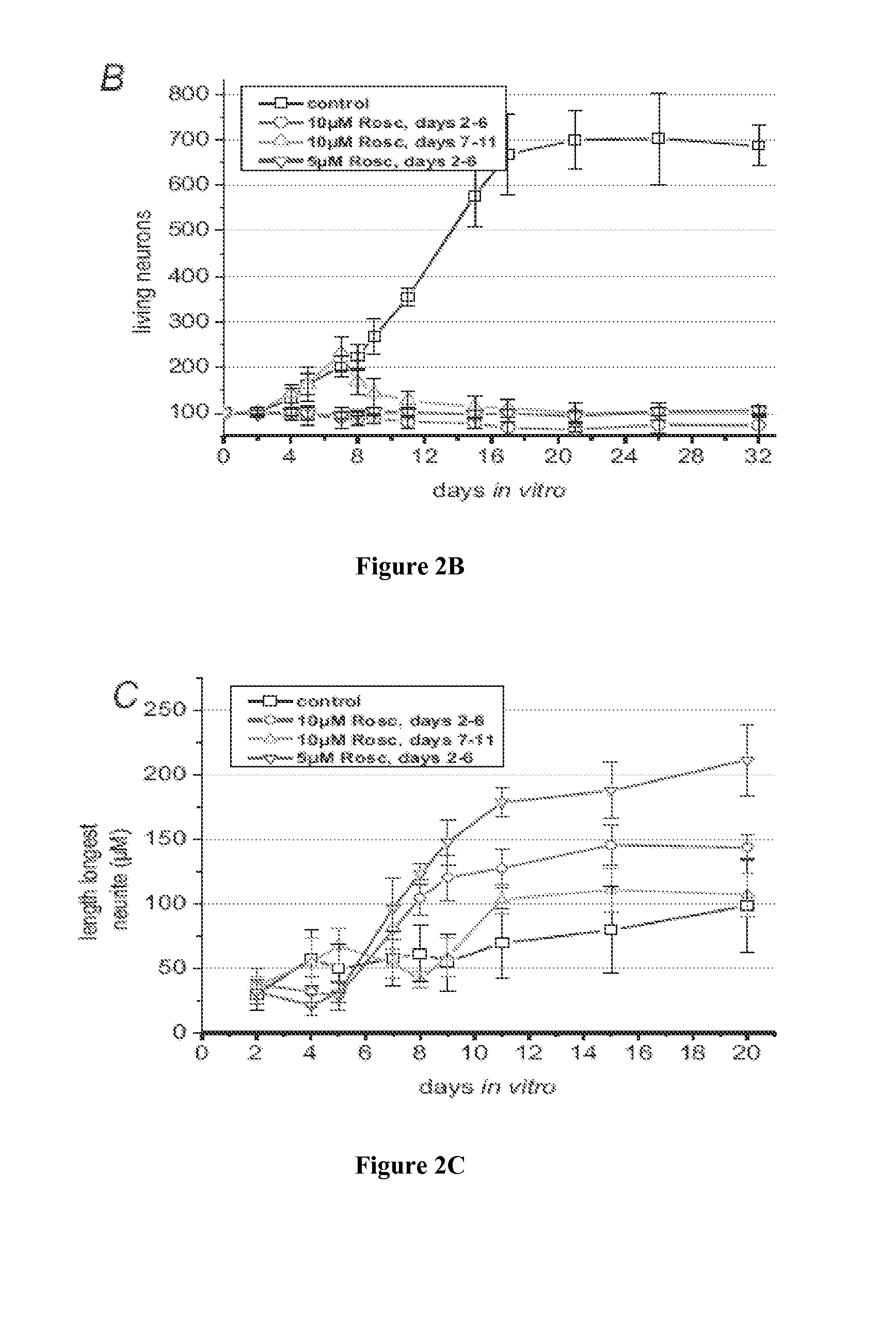Stable Electrically Active Neurons from Adult Tissue
a technology of electrically active neurons and adult tissue, which is applied in the field of in vitro cell culture systems and microelectrode array hybrid systems, can solve the problems of labor-intensive, complicated, and inability to achieve cell cycle arrest in neurons,
- Summary
- Abstract
- Description
- Claims
- Application Information
AI Technical Summary
Benefits of technology
Problems solved by technology
Method used
Image
Examples
example 1
Conditions for Culturing Neurons Derived from the Hippocampus of Adult Rats
[0052]All parameters of the adult culture system were optimized for the support of neuronal attachment, regeneration, and long-term survival in vitro (FIG. 1, Table 1). Cellular trauma during the cell culture process was minimized by first lowering the temperature of the Dissection medium to 4° C. Next, extracellular matrix proteins and connective tissue in the brain fragments were digested using papain (2 mg / ml HA minus Ca2+, 37° C. shaking water bath, 80 revolutions per minute) followed by repeated rinses of the tissue to inactivate the enzyme. Oxidative damage from free radicals released during tissue dissociation was limited by inclusion of the powerful anti-oxidants Trolox (D. Mulkey et al., 2003) and dextrose-coated cerium oxide nanoparticles (M. Das et al., 2007) in the Dissociation and Plating medium. Direct neuro-protection against apoptotic agents was achieved by adding caspase inhibitors (1, 3, and...
example 2
Inhibition of Cell Cycle Progression in Mature Neurons In Vitro
[0053]Media formulations (Table 1) along with the time- and dose-dependent application of growth factor and transcription factor mediators (FIG. 1) were applied to promote neuronal recovery and long-term functional survival. While these improved culture system parameters supported adult neurons, they also forced these terminally differentiated primary neurons to enter the cell cycle and divide. While critical growth factors, specifically basic fibroblast growth factor (bFGF) and dissociated cell culture conditions supported the survival and regeneration of mature neurons derived from adult rat hippocampal tissue, they also triggered re-entry into the cell cycle and division through up-regulation of cyclin and cyclin-dependent kinase (cdk) expression (S. B. Rodan et al., 1989; H. Katsuki et al., 2000; L. Munaron, 2002; S. M. Goodyear and M. C. Sharma, 2005; S. Goodyear and M. C. Sharma, 2007). The mitotic division of thes...
example 3
Electrical Activity and Membrane Channel Expression of Adult Hippocampal Neurons In Vitro after Elimination of Mitotic Activity
[0057]Neurons were evaluated for electrical recovery after 6, 13, and 25 DIV using whole-cell patch clamp electrophysiology to evaluate the electrical potential of neurons, defined by the ability to move current into and out of the cell and to fire and propagate action potentials. The recovery of electrical activity in vitro was found to be significantly different between populations of neurons allowed to divide unchecked and neurons where mitotic division was prevented through application of roscovitine. When allowed to mitotically divide unchecked in vitro, neurons did not fully recover electrically for up to 3 weeks in vitro and then only after the neurons reached confluency and were stimulated with 25 μM glutamate for more than 24 hours (D. Edwards et al., 2010). Prevention of neuronal division in vitro through application of roscovitine (5 μM days 2-7 i...
PUM
 Login to View More
Login to View More Abstract
Description
Claims
Application Information
 Login to View More
Login to View More - R&D
- Intellectual Property
- Life Sciences
- Materials
- Tech Scout
- Unparalleled Data Quality
- Higher Quality Content
- 60% Fewer Hallucinations
Browse by: Latest US Patents, China's latest patents, Technical Efficacy Thesaurus, Application Domain, Technology Topic, Popular Technical Reports.
© 2025 PatSnap. All rights reserved.Legal|Privacy policy|Modern Slavery Act Transparency Statement|Sitemap|About US| Contact US: help@patsnap.com



